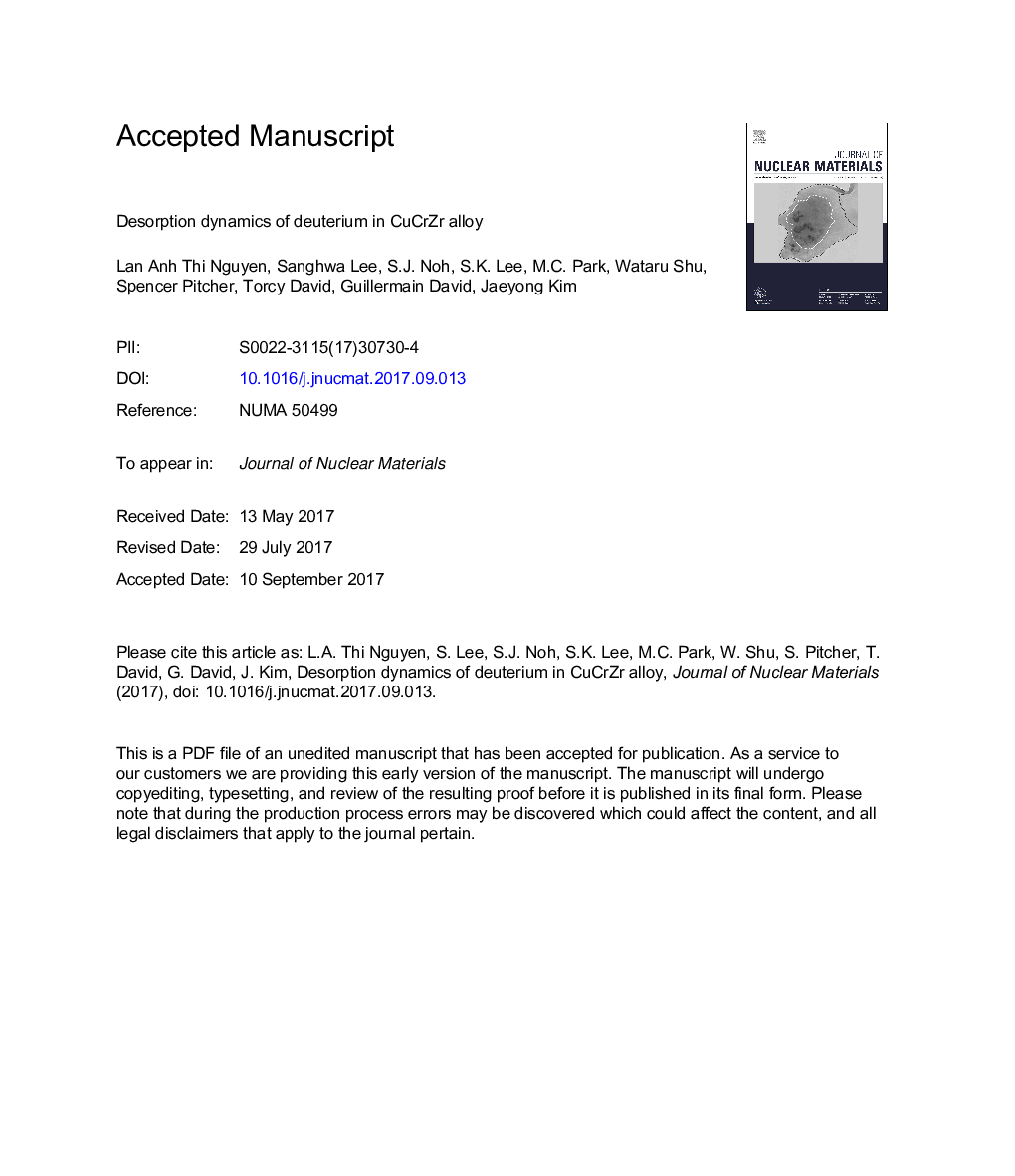| Article ID | Journal | Published Year | Pages | File Type |
|---|---|---|---|---|
| 5453795 | Journal of Nuclear Materials | 2017 | 30 Pages |
Abstract
Desorption behavior of deuterium (D2) in CuCrZr alloy was investigated considering sample thickness, loading and baking temperature of deuterium followed by the ITER scopes. Cylindrical specimens of 1, 3, 5 mm thick with 4 mm diameter were exposed to deuterium at a pressure of 25 bar at 120, 240 and 350 °C for 24 h, then baked at 800 °C in a vacuum chamber maintained at a pressure lower than 10â7 Torr. Deuterium desorption characteristics such as desorption rate and amount of deuterium in the sample were estimated by analyzing the desorption peaks monitored with a residual gas analyzer (RGA), and the trapping energy of deuterium was calculated using thermal desorption spectroscopy (TDS). Secondary ion mass spectroscopy (SIMS) results showed that deuterium atoms embedded in the sample at a depth of less than 15 μm and desorbed as low as 400 °C. All absorbed deuterium atoms in the specimen were completely retrieved by dynamic pumping at 800 °C in 15 min. The desorption rate of deuterium per unit area was inversely proportional to the increment of the thickness of the sample, and was proportional to the loading temperature. Based on the assumption that a uniform distribution of interstitial sites for deuterium follows the Femi-Dirac statistics, the result of TDS demonstrated that the CuCrZr alloy has two types of trapping energies, which were estimated to be 62 and 79 kJ/mol.
Related Topics
Physical Sciences and Engineering
Energy
Nuclear Energy and Engineering
Authors
Lan Anh Thi Nguyen, Sanghwa Lee, S.J. Noh, S.K. Lee, M.C. Park, Wataru Shu, Spencer Pitcher, David Torcy, David Guillermain, Jaeyong Kim,
